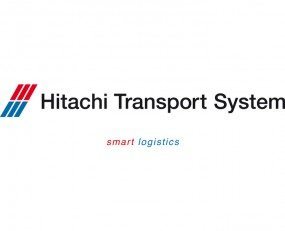
Fiscal 2017 was a good year for Japan’s Hitachi Transport System, which managed to grow turnover and operating profits well above domestic inflation thanks to good performance from its global logistics activities.
Group revenues for the 12 months ended March 31 grew 5.3% to ¥700bn ($6.37bn), while EBIT rose 4.9% to ¥33bn ($300m), mildly boosting return on equity and return on assets. The book value of total assets and shareholder equity were higher than in the prior year, while net income surged 11.8% to almost ¥21bn ($191m).
For the current fiscal year, it targets revenues of ¥710bn, EBIT of ¥34.7bn and net income of ¥21.5bn.
Its domestic plan is to “enhance and evolve” its 3PL business by expanding its B2B business into B2B2C, while pushing for the development “of region-based business under the leadership of regional business companies”.
Moreover, it plans to implement new smart logistics technologies to improve “on-site operation and differentiation” as well as to establish and implement standard 3PL models to expand “industry-based (medical, automotive, distribution and daily commodities, etc.) and area-based” platform businesses.
Meanwhile, its strategy overseas is to expand its trucking network and cold chain logistics in Asia, while shoring up its 3PL business in North America (with a particular focus on automobile parts) and growing its European intermodal operations from Turkey (to Northern Europe and Central Asia). Finally, in China, it plans to grow in Xian, Chongqing and Chengdu.
As far as its freight forwarding business is concerned, it aims for higher profitability and enhanced “offshore business through globally-unified management”, while also expanding “project forwarding by combining 3PL, heavy machinery and plant logistics”, it said.
This strategy is clearly aimed at boosting efficiency, meaning operational continuity based on its existing business plan. The effort shows in the key financial metrics contained in its annual results.
Operating cash flow was up 6% to ¥27.9bn on a comparable basis. Investing cash flow was significantly lower at -¥6bn versus -¥69bn in the prior year, yielding about ¥22bn of free cash flow, which was a remarkable achievement. A good performance boosted its gross cash position, up to ¥63.4bn from ¥57.4bn one year earlier, despite negative cash flow from financing.
Domestic sales rose 1% to ¥418bn “due to fullscale operations of new projects launched in the previous fiscal year (retail products and foods, etc.) and the effects of collaborative innovation with business partners,” the group said, noting that profits were flat at ¥21.7bn “mainly due to upfront investments for the next generation/advanced technologies and working method transformation.”
However, its global logistics business saw revenues surge 12% to ¥260bn thanks to a recovery in handling volumes in the forwarding business “especially in overseas, full-scale operations of new projects launched in the previous fiscal year (automobile and apparel-related)”. It also benefited from favourable exchange rates. As a result, profits grew 10% to ¥6.28bn.
Finally, smaller logistics-related businesses contributed to group revenues to the tune of ¥22bn in revenues (unchanged year-on-year) and ¥1.7bn in profits (-8%), whose fall was due to a drop in volumes of its automobile maintenance business.
Source: Transport Intelligence, May 24, 2018
Author: Alessandro Pasetti